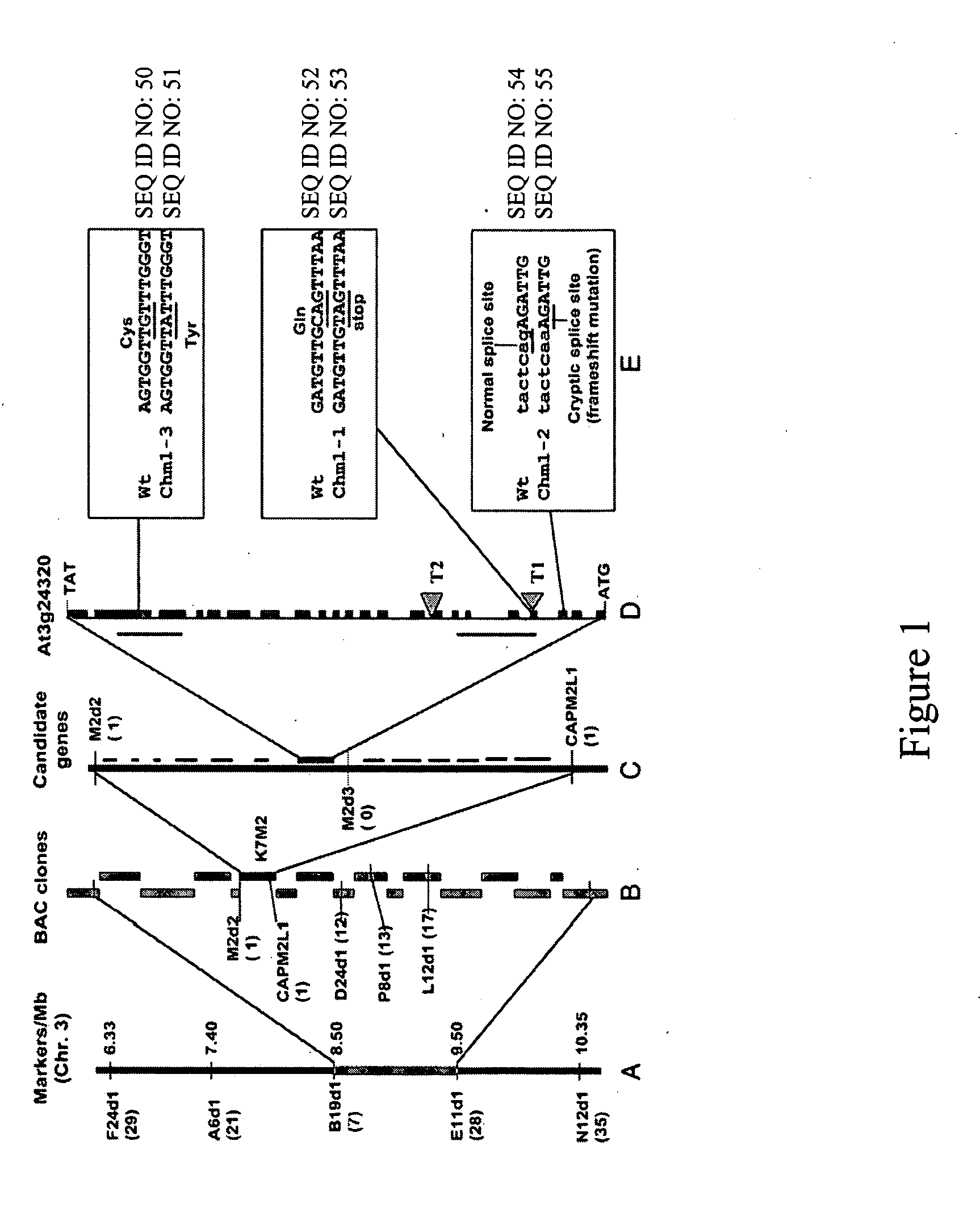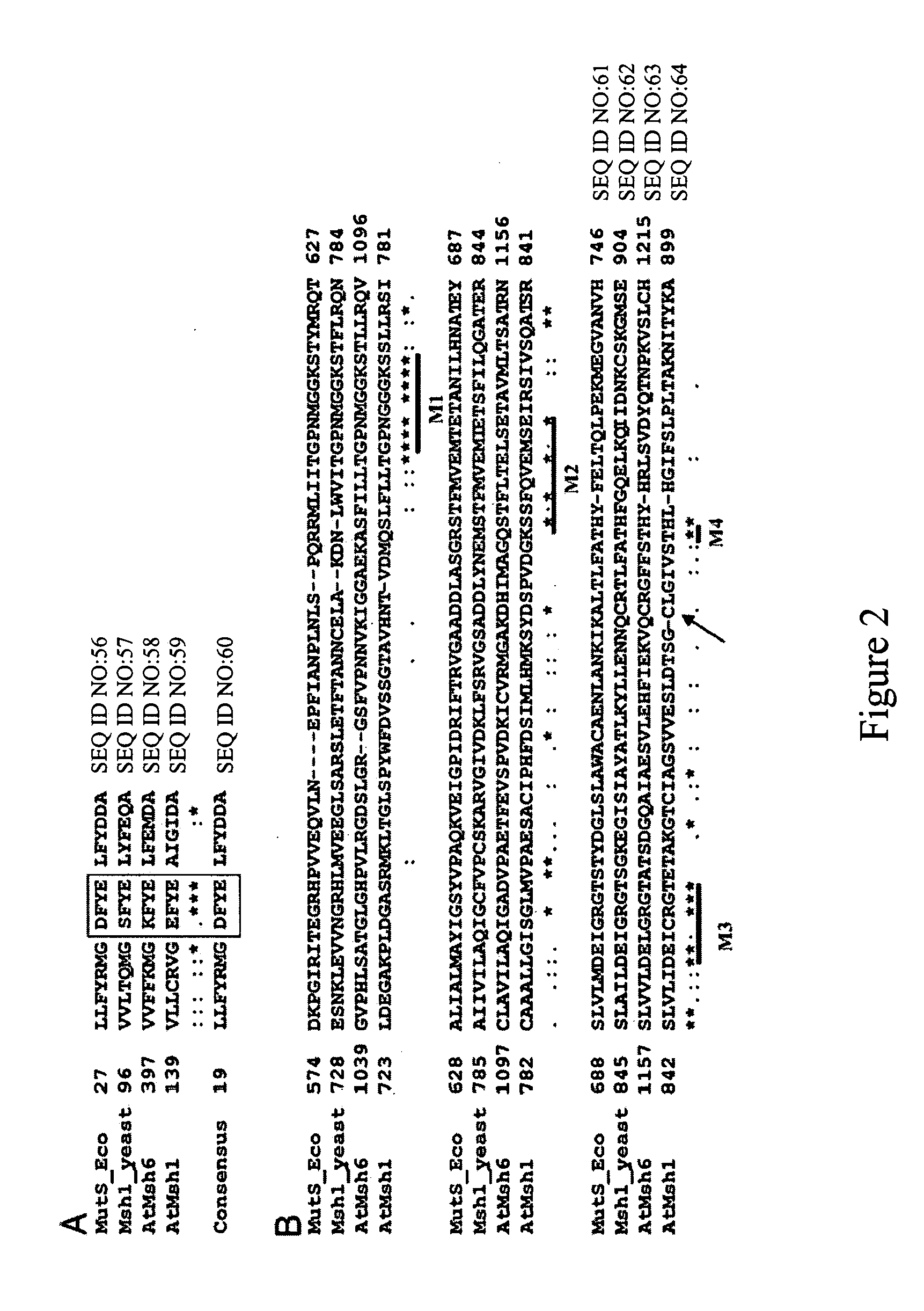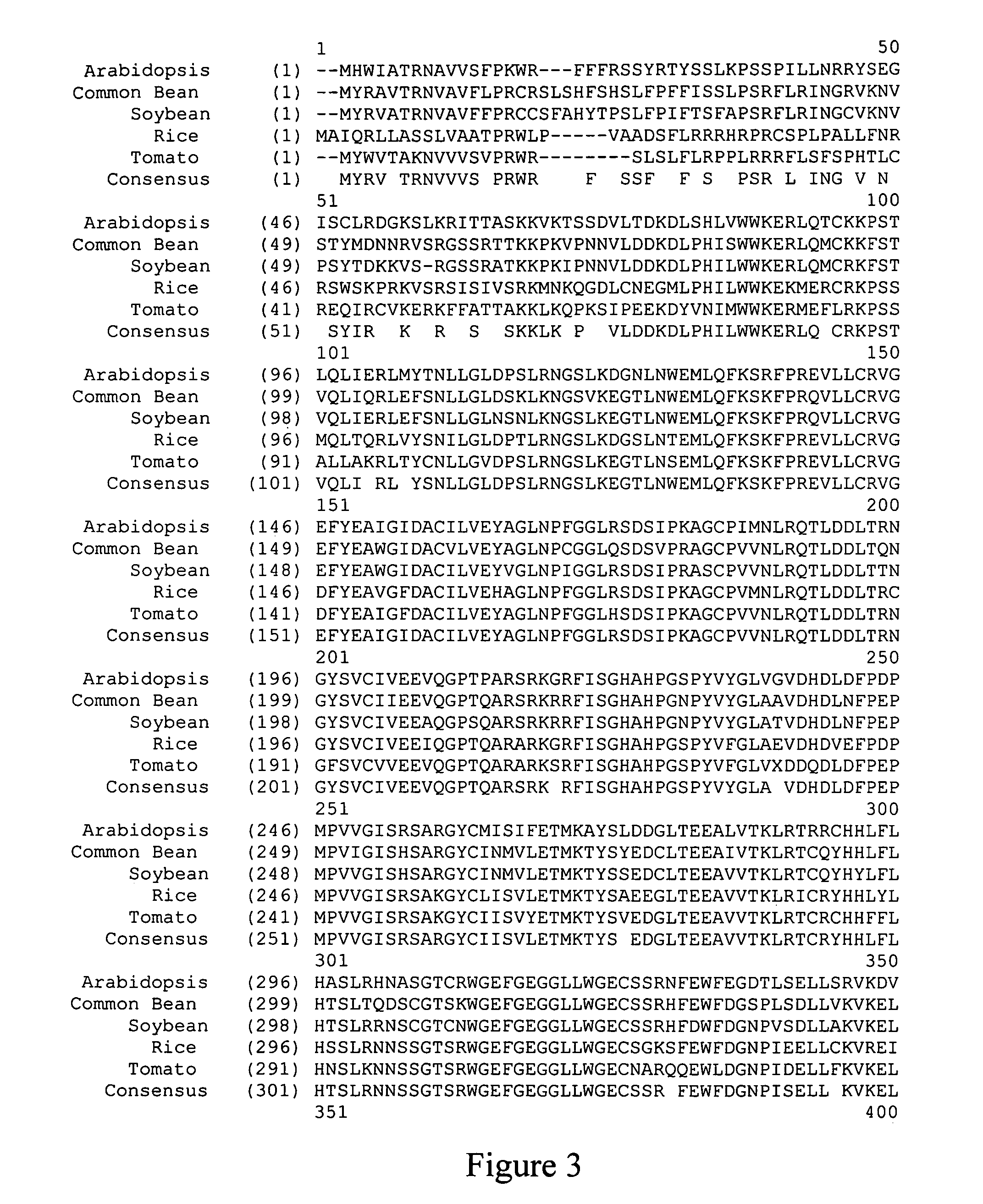Implementation of a mitochondrial mutator
a technology of mitochondrial mutators and mutators, which is applied in the field of mitochondrial mutators, can solve problems such as subsequent leaf variegation, and achieve the effect of suppressing ectopic recombination
- Summary
- Abstract
- Description
- Claims
- Application Information
AI Technical Summary
Benefits of technology
Problems solved by technology
Method used
Image
Examples
example 1
Identification of the AtMSH1 Gene
[0138] A. Gene mapping, cloning, and sequence analysis. A map-based cloning strategy for the isolation of the CHM locus involved the design of PCR-based co-dominant markers, using the Cereon Arabidopsis polymorphism collection (Jander, et al., ibid.) to distinguish between the Col-0 and Landsburg erecta ecotypes used in the F2 mapping populations. The markers were designed in a 5-Mb region of Chromosome III based on information from the classical mapping experiments of CHM (Martinez-Zapater, et al., ibid.; Redei, ibid.). The primer sequences for markers are available upon request. The F2 mapping population was derived from a cross between the chm1-1 mutant line and Landsburg erecta ecotype (pollen donor). A segregating sub-population of 172 variegated plants was analyzed. Genomic DNA purification was conducted according to Li and Chory, ibid. DNA gel blot analysis was conducted using the protocol of Sambrook et al., ibid. High resolution mapping of ...
example 2
Plant Transformation and Biolistic Delivery
[0147] The amino acid sequence of AtMSH1 was analyzed with MitoProt (Claros & Vincens (1996) Eur. J. Biochem. 241, 779-786), and the first 213 nucleotides of the gene were PCR amplified with the primers MSHtranspFor 5′GGCCATGGTGTGMTTGCATAGTCGTCG3′ (SEQ ID NO:48) and MSHtranspRev 5′GGCCATGGAAA CATCACTTGACGTCTTC3′ (SEQ ID NO:49). PCR products were ligated to the Pgem®-T Easy Vector System (Promega) and digested with Ncol to release the insert. Insert fragments were ligated to the PCAMBIA 1302 vector at the Ncol site that resides at the start of gfp. This vector utilizes the CaMV 35S promotor. Bombardment experiments used 4-week-old leaves of Arabidopsis (Col-0) with tungsten particles and the Biolistic PDS-1000 / He system (Bio-Rad). Particles were bombarded into Arabidopsis leaves using 900-psi rupture discs under a vacuum of 900-psi (1 psi=6.9 kPa). After the bombardment, Arabidopsis leaves were allowed to recover for 18-22 h on Murashige an...
example 3
Identification of Homologs
[0148] Homologs were identified by BLAST search using the tblastn program against the est_others database. The MSH1 protein sequence was used as the Query sequence. The search was done using the BLOSUM62 matrix, word size of 3 and low complexity filter.
PUM
| Property | Measurement | Unit |
|---|---|---|
| nucleic acid | aaaaa | aaaaa |
| genomic plasticity | aaaaa | aaaaa |
| frequency | aaaaa | aaaaa |
Abstract
Description
Claims
Application Information
 Login to View More
Login to View More - R&D
- Intellectual Property
- Life Sciences
- Materials
- Tech Scout
- Unparalleled Data Quality
- Higher Quality Content
- 60% Fewer Hallucinations
Browse by: Latest US Patents, China's latest patents, Technical Efficacy Thesaurus, Application Domain, Technology Topic, Popular Technical Reports.
© 2025 PatSnap. All rights reserved.Legal|Privacy policy|Modern Slavery Act Transparency Statement|Sitemap|About US| Contact US: help@patsnap.com



